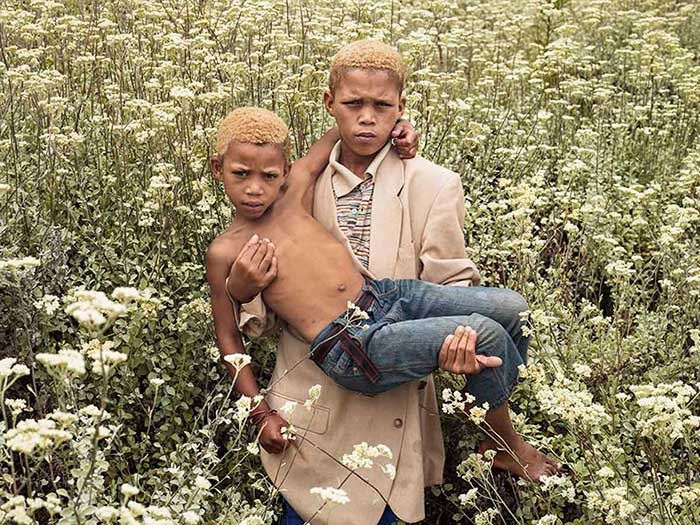In his series titled 1994, South African photographer, Pieter Hugo, explores what he calls the ‘corrosive effects of history’. Looking back to when he was eighteen, Hugo remembers 1994 as both a pivotal and harrowing year – South Africa’s first democratic election in which Nelson Mandela was elected and the Rwandan genocide of the Tutsi community. Travelling to Rwanda in 2014, exactly two decades after the genocide in which nearly one million people were killed, Hugo was confronted with a landscape on which its devastating history had left its mark. Hugo states that, ‘unlike Germany where genocide was industrialised and out of sight, in Rwanda it was all over the landscape – every banana plantation, every church was a site of massacres.’
The subjects in these portraits, taken in villages in both Rwanda and South Africa, are children up to the age of sixteen, born after the events of 1994. For Hugo, this generation appeared to be unburdened by the past. The portraits present a multitude of contrasts and conflicts and are, typically to Hugo, unresolved images. Many of the children in the portraits are photographed wearing Sunday best or decorative dresses which provide contrast against the rich and gritty earth. Against a landscape that has been witness to such horror, the children seem to offer hope and look towards the promise of the future. Saturated in memories of a devastated community, the African landscape acts as a backdrop for the portraits and seems to exude resilience. The portraits are powerful symbols of the ability to heal and regenerate.

Portrait #12, Rwanda, 2015. Pieter Hugo
Hugo argues, ‘theres a thin line between nature being seen as idyllic and as a place where terrible things happen – permeated by genocide, a constantly contested space’. The conflicting themes of hope and devastation run throughout the artist’s series of portraits of 1994. Focusing to reflect on a year of, as Hugo puts it ‘big meta-narrative shifts’ the series of photographs draw up memories of the hopeful change in South Africa’s political scene along with those of the genocide which coincided in Rwanda the same year
(By Flora Miller)
